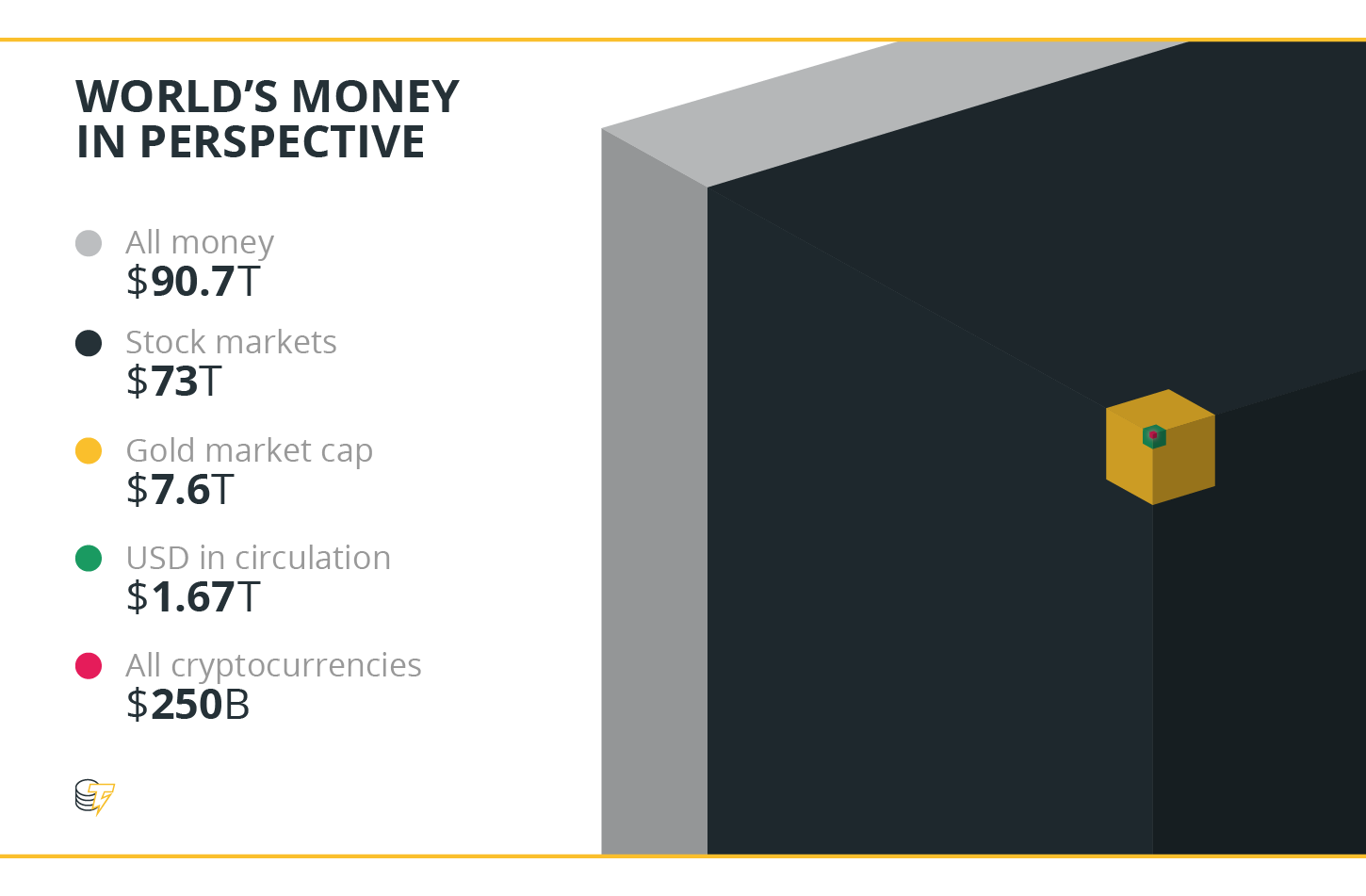Why do we see so much fluctuation in cryptocurrency prices?
The cryptocurrency market is still considered very new and, beyond hearing the term “cryptocurrency,” most people are still very much unfamiliar with the industry.
Nascent markets have a number of qualities that make them inherently volatile.
Limited liquidity exists within the market if you compare it to more established markets like traditional economies, including the foreign exchange market. To put it into perspective, the total value of all the money in the world is more than $90 trillion, while the total cryptocurrency market cap is hovering around $250 billion — a 36,000 percent difference.

Daily cryptocurrency trading volumes are around the $14 billion mark, while daily forex trades are closer to $5 trillion. The spread — the difference between the buy and sell price — on foreign currency trades will be a few pennies at the most, while spreads on cryptocurrency trades can be as high as a few dollars.
All this points to a very thin market that naturally moves very quickly and thus increases the volatility of cryptocurrency prices.
A large number of new adopters are also joining the market every single day. At the beginning of 2018, cryptocurrency exchanges reported that they were adding 100,000 new users every day. Many of these members will have significant vested interest in the price of cryptocurrencies going either up or down, which adds to the disruptive nature of the market and further increases volatility.
Finally, price manipulation can be rife in nascent markets. Central exchanges control most of the flow of cryptocurrencies, giving them a lot of incentive to grow their revenue by artificially manipulating crypto prices. One way they can do this is by manipulating the price feeds displayed on exchanges, prompting traders to either buy or sell.
The effect of this type of manipulation is compounded if you throw in thousands of new market participants who can be easily taken advantage of. In addition, price manipulations can be hard to prove and control in unregulated markets.
Central exchanges also provide a single point of failure. They manage and store large sums of crypto, which means if they get hacked, it can have a significant effect on the price of cryptocurrencies.
Comments
Post a Comment